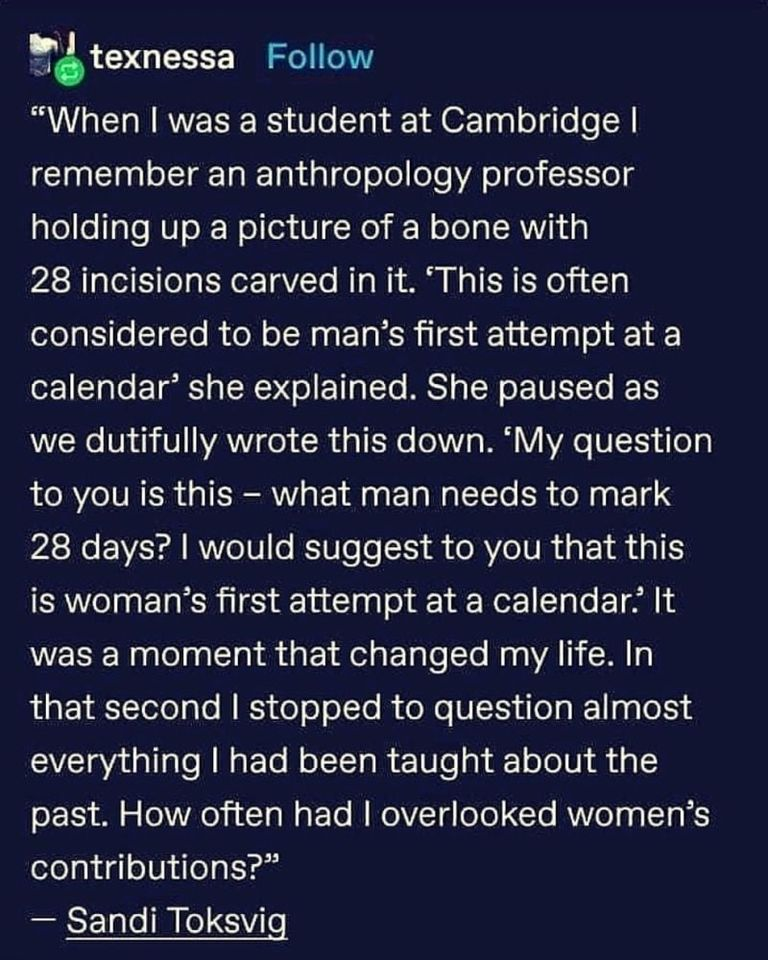this post was submitted on 10 Mar 2024
951 points (87.9% liked)
Memes
47027 readers
2443 users here now
Rules:
- Be civil and nice.
- Try not to excessively repost, as a rule of thumb, wait at least 2 months to do it if you have to.
founded 5 years ago
MODERATORS
you are viewing a single comment's thread
view the rest of the comments
view the rest of the comments

A woman’s cycle varies between 15 and 45 days, averaging 28.1 days, but with a standard deviation of 3.95 days. That’s a hell of a lot of variability from one woman to the next. And the same variability can be experienced by a large minority of women from one period to the next, and among nearly all women across the course of their fertile years.
On the other hand, the moon’s cycle (as seen from Earth) takes 27 days, 7 hours, and 43 minutes to pass through all of its phases. And it does so like clockwork, century after century.
Of the two, I am finding the second to have a much stronger likelihood of being the reasoning behind the notches.
Strange how gender-bigotry style historical revisionism and gender exceptionalism seems to get a wholly uncritical and credulous pass when it’s not done by a man.
Other than tides, why do you need to know when the next full moon is? And can't you just look at the moon and see how close it is waning to the full moon?
Not saying the calendar is definitely a woman's, but wanting to know when you're going to start leaking blood onto everything near you seems like a good reason to track a period. Plenty of women are regular like clockwork, I was at 26 days almost exactly for years.
If you start to notice one thing happens pretty regularly and another thing happens regularly but on a larger scale... Say the monthly moon phases and the seasons, you can use the more frequent one to roughly track the less frequent one.